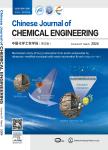NLO response of derivatives of benzene, stilbene and diphenylacetylene:MP2 and DFT calculations
NLO response of derivatives of benzene, stilbene and diphenylacetylene:MP2 and DFT calculations作者机构:Laboratoire de Microscopie Microanalyse et Spectroscopie Mol&ulaire Faculty of Sciences Djillali Liabes University of Sidi-Bel-Abbes 22000 Sidi-BeI-Abbes Algeria
出 版 物:《Chinese Journal of Chemical Engineering》 (中国化学工程学报(英文版))
年 卷 期:2017年第25卷第6期
页 面:800-808页
核心收录:
学科分类:081704[工学-应用化学] 07[理学] 08[工学] 0817[工学-化学工程与技术] 070303[理学-有机化学] 0703[理学-化学]
主 题:First hyperpolarizability DFT TD-DFT Push-pull molecules NBOCharge transfer
摘 要:MP2 method and different functionals such as M06-HF, M06-2X, CAM-B3 LYP, PBE0, B3 LYP and M06 L incorporating different XC amounts were used to calculate the static first hyperpolarizabilies β(0) of eight molecules which are derivatives of benzene, stilbene and diphenylacetylene. The values were then compared to the experimental ones. The M06-2X functional was then selected for further calculations. NBO calculations were also performed to define the intramolecular charge transfer in each molecule. TD-DFT calculations were performed taking into account the solvent effect using the IEF-PCM formalism. Some parameters characterizing the vertical transitions such as the wavelength of the maximum absorption λ_(max) were compared to the experimental ones. Finally,solvation Gibbs free enthalpy ΔG_(solv) values have also been examined in order to determine which the specific solvent for a given molecule is.



